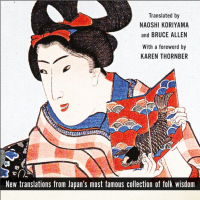The "Konjaku Monogatari" is one of Japan's oldest collections of stories. We know little about its origins, but scholars surmise it was likely put together by a monk, or perhaps an aristocrat, from Kyoto in the early 12th century. In total, it contains more than 1,000 stories — few run for more than three pages — and features a wide range of characters, from the Buddha to Heian Period (794-1185) princes, poets, monks and warriors. Many are supernatural folktales that warn against foxes and demons. Others teach about the powers of the Lotus Sutra. All are meant to educate.
Japanese Tales from Times Past, Translated by Naoshi Koriyama and Bruce Allen.
288 pages
TUTTLE PUBLISHING, Folklore.
Why read it today? The "Konjaku" provides a fascinating glimpse into the world of medieval Japan. This is particularly true of the Japanese tales, which form the largest part of the collection and are the focus of Tuttle's 2015 edition, titled "Japanese Tales from Times Past."
Equally important is the "Konjaku's" lasting influence. For instance, it contains one of the earliest versions of "The Maiden at Dojo Temple," a kabuki staple that relates the efforts of a monk trying to escape the wrath of a snake woman by hiding under a large temple bell. The book was also a favorite of writer Ryunosuke Akutagawa who frequently mined it for inspiration and credited it with providing ideas for his legendary short story "Rashomon."
Almost 1,000 years after the book was completed, the "Konjaku's" anonymous author would no doubt be pleased to know that it is still being read and passed along, as had always been intended.



